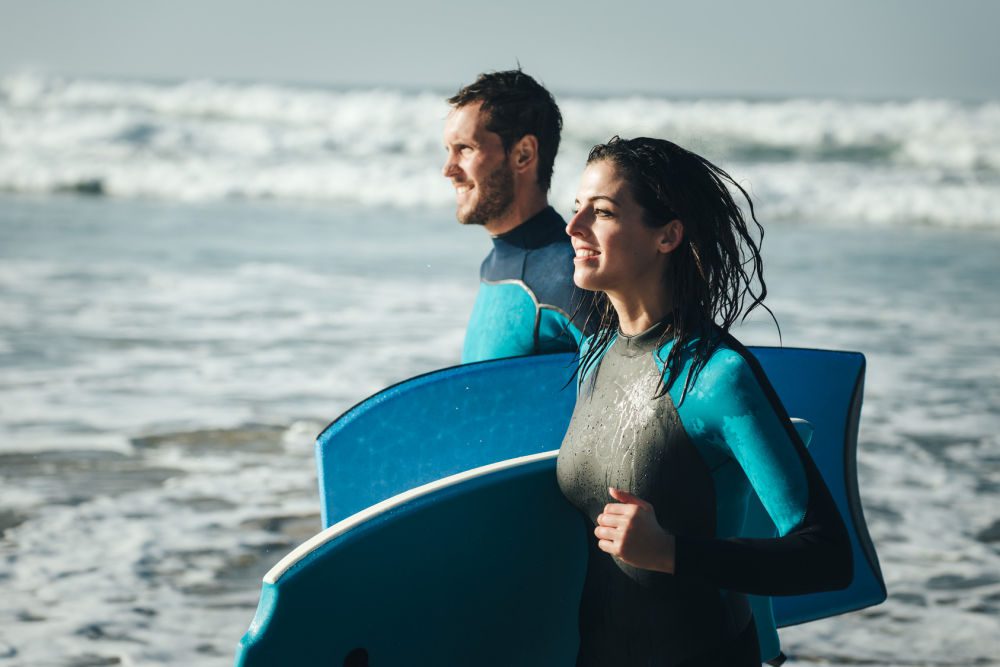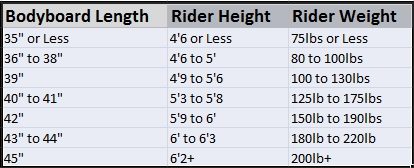
When you think of the word “bodyboard,” you might be surprised to hear others call it a “boogie board.” Bodyboards and boogie boards are actually the same thing. Technically the boogie board came on the scene first. The name “boogie board” is actually a specific brand of bodyboard, which is why the terms are used interchangeably.
Contents
Why are boogie boards called boogie boards?
In July 1971, Tom Morey built a board that he could use to ride the waves in Hawaii. Morey also had a love for “boogie woogie” jazz music. Hence the trademarked brand name of Morey Boogie Boards. Ever since the invention plenty of other vendors have utilized similar designs for their water craft, all under the name of bodyboards.
Is bodyboarding easier than surfing?
Bodyboarding can be considered an alternative to surfboarding if someone wants to try a little less aggressive way to handle the waves. You only need to lie down on the board and paddle at first. if you want, you could boogie on this board a bit easier than learning to balance yourself on the waves with a traditional surfboard. Riders can take a drop knee position, if they are feeling ambitious. You are basically combining body boarding, surfing, and knee boarding at the same time. It’s a bit more advanced but certainly adds a little excitement to the ride.
What’s the difference between boogie boarding and surfing?
The boards used for boogie boarding are a bit shorter than surfboards and come with extra parts that would help improve the performance and comfort. They are a bit cheaper than a surfboard with the most expensive bodyboard costing around $100. Often made of various types of plastic, they are lightweight to ensure good mobility on the waves. Some boards even come with a foam core to add more buoyancy to the board. Boogie boarders typically lie down on the board while wave riders on a surf board are likely to stand up on their boards.
What size boogie board should I get?
Choosing the right size board is an imporant step towards safe boogie boarding. A Boogie board is typically between 35″ and 44″. Sizing a board for a wave rider is pretty easy. Your board should generally be about the length between your chin and your knees. The taller you are, the longer your boogie board should be. Below is a chart to use as a guideline.

Here are the usual parts of a bodyboard:
Slick
This part is the bottom part of the boogie board which faces the water and it is lined
Deck
This part is the top part of the bodyboard where the user lies down while bodyboarding.
Nose
This is the front part of the bodyboard which can be used to control the directions of the board.
Tail
This is the back part of the bodyboard which is located under your belly. The tail can be either be crescent- or batwing-shaped, which helps in generating speed as you move along the wave.
Stringer
This can either be made from carbon or graphite and they are located within the board to retain its shape and provide spring to the board.
Accessory options
When buying bodyboards, there are plenty of optional accessories to help you ride better when you decide to tackle a wave.
Swim fins
Fins assist riders to paddle faster to the waves they wish to ride. They come in two sizes: long and short. Long fins can help add power behind while bodyboarding, or you could try shorter fins to enable easier movement
When buying boogie board fins, it is important that they are snug to ensure they do not cause cramps and fall off your feet in the middle of all the action.
Leash
For beginners, this accessory is important because it ensures the board does not go far away from the user when they wipe out. Leashes can be let go of if the user is already proficient in bodyboarding.
Wax
Bodyboards need regular waxing to help keep the deck firm and retain its grip, especially when you prefer to alternate between drop-knee or prone bodyboarding. Boarders can also use the surf wax on the nose, tail and rails to help ensure that it is smooth as it travels with the waves.
Storage bag and car rack
These accessories are used for better storage of the boards when traveling or for safe keeping.
Rash guards
Some body board shops also offer rash guards which are perfect in preventing chafing and irritation when using a body board for a long period of time.
Maintenance and Care
Like surfboards, a bodyboard should be properly cared for each time it is used. Although it is relatively inexpensive, bodyboards are not disposable and require regular maintenance after being soaked in saltwater and the other elements.
After every use, it is important to rinse the board immediately in fresh water because saltwater can seep inside the foam and affect the durability and strength of the board. Users must also not leave their bodyboards under extreme temperatures because the surface can bubble up and ruin the board itself.
It is also not advised to play with the board on the sand because it may scratch the slicks and completely damage the board. It is also important that the bodyboard is not placed under several items when it is off-season because it may damage the bodyboard with dents from the items piled on top of it.
Conclusion
Bodyboard vs. boogie board? Call it a body board or a boogie board if you want. Regardless of its name, riding on these smaller boards can be a lot of fun. Make sure you wax up, secure your leash, and give it your all!
